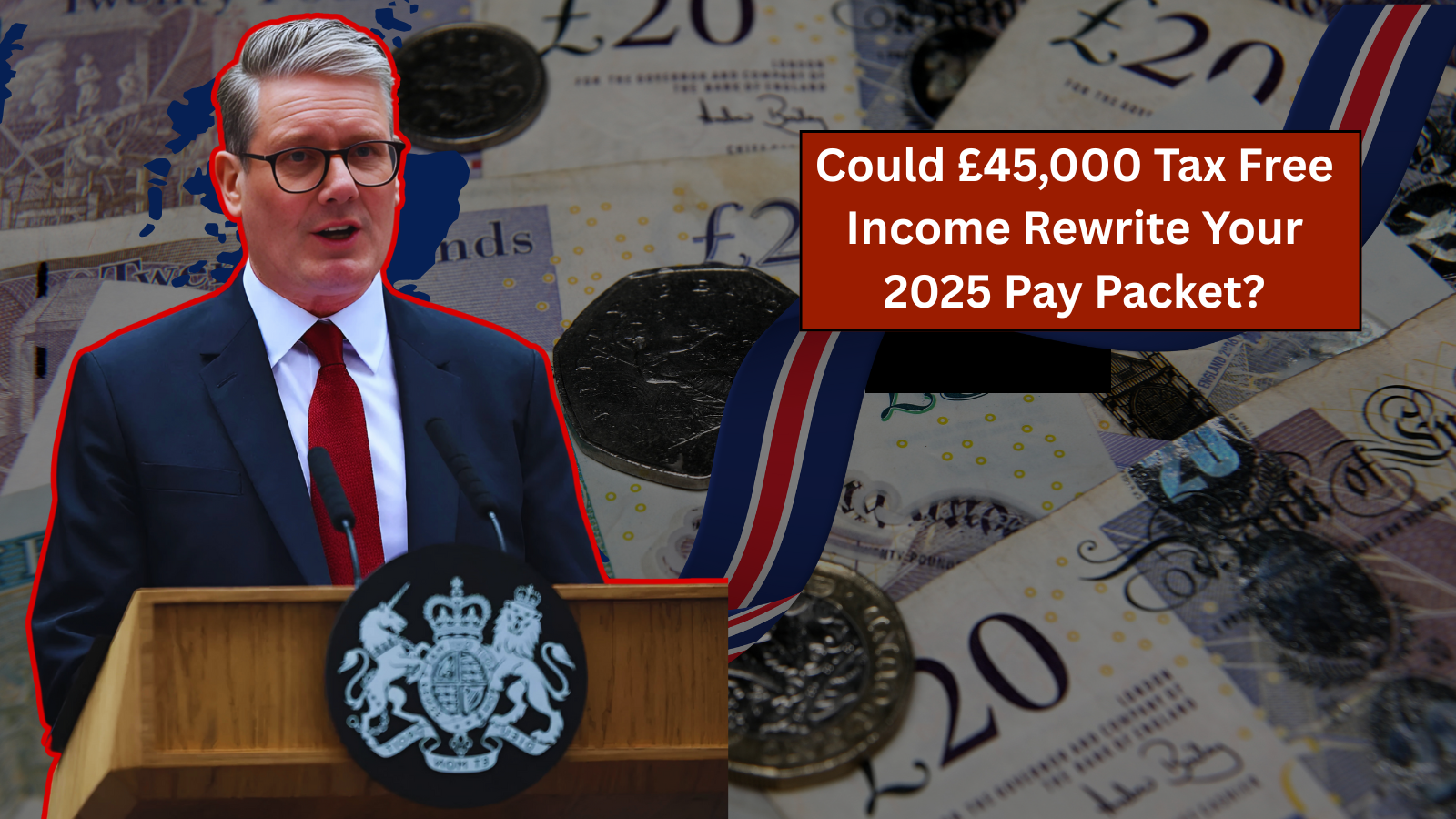The landscape of tax-free income in the UK for 2025 presents unprecedented opportunities for savvy individuals to maximise their take-home pay. With the standard personal allowance remaining at £12,570 and ISA limits holding steady at £20,000, understanding how to combine multiple allowances could dramatically transform your financial position.
Breaking Down the £45,000 Tax-Free Target
Achieving substantial tax-free income requires strategic thinking and understanding of the various allowances available. Here’s how the numbers stack up:
Personal Allowance: Your Foundation
Every UK resident enjoys a personal allowance of £12,570 for the 2025/26 tax year, representing the amount you can earn without paying any income tax. This forms the bedrock of your tax-free income strategy.
However, this allowance begins to taper once your income exceeds £100,000, reducing by £1 for every £2 earned above this threshold. For high earners, this creates an effective marginal tax rate of 60% in the taper zone.
ISA Allowances: The Investment Powerhouse
The ISA allowance for 2025/26 remains at £20,000, offering substantial scope for tax-free growth. This allowance can be distributed across different ISA types:
- Cash ISAs: Perfect for emergency funds and short-term savings
- Stocks & Shares ISAs: Ideal for long-term wealth building
- Innovative Finance ISAs: For peer-to-peer lending
- Lifetime ISAs: Limited to £4,000 annually with a 25% government bonus
From April 2024, new rules allow multiple subscriptions to the same type of ISA within a tax year, providing greater flexibility in your savings strategy.
Dividend Allowance: Small but Significant
The dividend allowance for 2025/26 stands at £500, down from previous years but still valuable. Any dividends received through ISAs remain completely tax-free, making this wrapper even more attractive for dividend-focused investors.
Personal Savings Allowance: Interest Income Protection
Basic rate taxpayers can earn up to £1,000 in savings interest tax-free, while higher rate taxpayers receive £500. Additional rate taxpayers don’t receive this allowance, emphasising the importance of using ISAs for higher earners.
Capital Gains Tax Allowance: Protecting Your Profits
The capital gains tax allowance remains at £3,000 for 2025/26, though this has decreased significantly from previous years. This reduction means many people may face larger tax bills when selling investments, highlighting the importance of using tax-efficient wrappers.
Strategic Combinations for Maximum Impact
The Marriage Allowance Advantage
Married couples or civil partners can transfer £1,260 of unused personal allowance between partners, potentially saving £252 in tax annually. This works when one partner earns less than the personal allowance while the other is a basic rate taxpayer.
Pension Contributions: The Ultimate Tax Reliever
The annual pension allowance for 2025/26 is £60,000, offering substantial tax relief opportunities. For example, a £45,000 pension contribution could cost a higher-rate taxpayer as little as £27,000 after tax relief.
Starting Rate for Savings
If your non-savings income is less than £17,570 (personal allowance plus £5,000), up to £5,000 of savings interest is taxed at 0%. This creates additional tax-free income opportunities for those with modest earned income.
Real-World Application: Case Studies
Case Study 1: The Basic Rate Taxpayer
Sarah earns £35,000 annually and maximises her tax-free income through:
- Personal allowance: £12,570
- ISA investments: £20,000 (generating tax-free returns)
- Personal Savings Allowance: £1,000
- Dividend allowance: £500
- Capital gains allowance: £3,000
Total tax-free income capacity: Over £37,000 before considering investment returns.
Case Study 2: The Married Couple Strategy
John and Lisa strategically allocate their income:
- Combined personal allowances: £25,140
- Marriage allowance transfer: £1,260
- Two ISA allowances: £40,000
- Combined savings allowances: £2,000 (both basic rate)
- Combined dividend allowances: £1,000
- Combined CGT allowances: £6,000
Their combined tax-free capacity exceeds £75,000.
Maximising Your 2025 Tax-Free Strategy
Timing is Everything
The ISA allowance resets each April and cannot be carried forward. This “use it or lose it” principle applies to most allowances, making early planning crucial.
Diversification Benefits
Diversifying income sources across different types—earned income, self-employed income, property income, dividends, savings, and gains—allows you to utilise each allowance to its fullest.
Professional Guidance
Given the complexity of tax rules and the potential for significant savings, consulting with a qualified financial advisor or tax professional can ensure you’re maximising every available allowance while remaining compliant.
Looking Ahead: Future Considerations
Potential Changes
The government is exploring ISA reforms in the 2025 Spring Statement to encourage more investment and wealth building. These changes could further enhance tax-free saving opportunities.
Planning for Uncertainty
With tax thresholds frozen and allowances under pressure, maximising current allowances becomes increasingly valuable. Each pound of tax-free income gained today provides compounding benefits over time.
Action Steps for 2025
- Audit Your Current Position: Calculate how much of each allowance you’re currently using
- Prioritise ISA Contributions: With recent changes to capital gains tax rates and reduced allowances, ISAs become even more valuable
- Consider Pension Contributions: Especially for higher-rate taxpayers, pension contributions offer immediate tax relief
- Plan with Your Partner: Married couples should coordinate their allowances for maximum benefit
- Review Investment Allocation: Ensure tax-inefficient investments are held within ISAs or pensions
The Bottom Line
While achieving exactly £45,000 in tax-free income requires careful planning and specific circumstances, the combination of personal allowances, ISA limits, and strategic use of other reliefs makes substantial tax-free income achievable for many UK taxpayers.
With tax allowances frozen and under pressure, each pound of tax-free income becomes more valuable. The key lies in understanding all available allowances and using them strategically rather than in isolation.
The 2025/26 tax year presents both challenges and opportunities. Those who take action to maximise their tax-free income potential could see significant improvements in their take-home pay and long-term wealth accumulation. Start planning now—your future self will thank you for every tax-free pound you secure today.
Remember, tax rules can change, and individual circumstances vary significantly. Always seek professional advice when implementing complex tax strategies to ensure compliance and optimisation for your specific situation.
